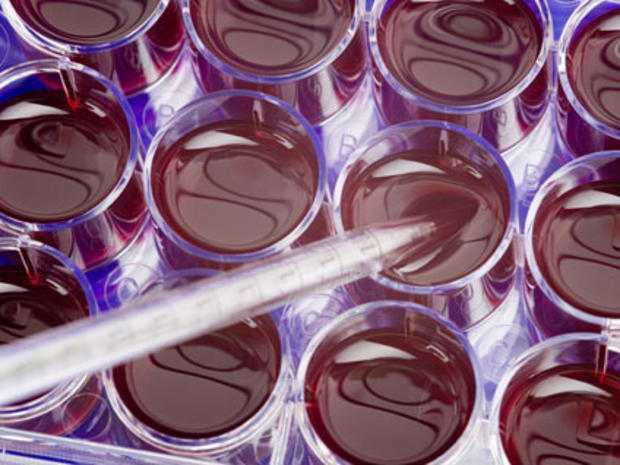Stem cell advance has scientists buzzing: What does it mean?
(CBS/AP) Scientists are buzzing about a new stem cell breakthrough that they think could lead to personalized treatments for major diseases.
What's the breakthrough? Scientists say they've successfully cloned a human embryo that can create customized stem cells.
For the study - published in the October 5 issue of Nature - detailed how researchers injected DNA from a volunteer's skin cells into donor eggs. Typically in cloning, the egg's genetic material is removed first, but when researchers tried that it didn't work, said study lead author Dieter Egli, a senior research fellow at the New York Stem Cell Foundation. This new method only worked when the donor's DNA was left inside the egg and the volunteer's genetic material was added.
But that caused a hitch: there were too many chromosomes. The newly created stem cells had too much DNA to function properly, and contained enough genetic material for two people. The scientists behind the study said that simple fact rules out the possibility a human can be cloned using this method.
"I could never imagine that those cells could make a viable human being," because of that, Egli said. "That's simply out of the question."
The cloning method is the same one used to clone Dolly the sheep in 1996, Time reported.
Scientists still have to figure out a way around this problem of too much DNA before they can use the cells to develop genetically-engineered tissues to treat various diseases.
"These cells are not therapeutically relevant at the moment," study co-author Dr. Scott Noggle, principal investigator at the New York Stem Cell Foundation lab in New York City, told the New York Times.
Egli and his colleagues are trying several different approaches to overcome this "technical barrier." But what's important, he said, is that it shows researchers can use this method to turn a person's own cells into stem cells - something that previously had been demonstrated in only in animals. The researchers started with 270 eggs and eventually created two stem cell lines at the Foundation's lab.
The New York group's work "is a major step forward scientifically," but the problem of the egg's leftover DNA is a serious limitation, said stem cell transplantation expert, Dr. George Daley of the Harvard Stem Cell Institute, who wasn't involved in the research. Daley said he thinks an alternative method of reprogramming skin cells to turn into stem cells will end up being more useful in the long run. But Egli's finding will help the competing method improve, Daley said.

